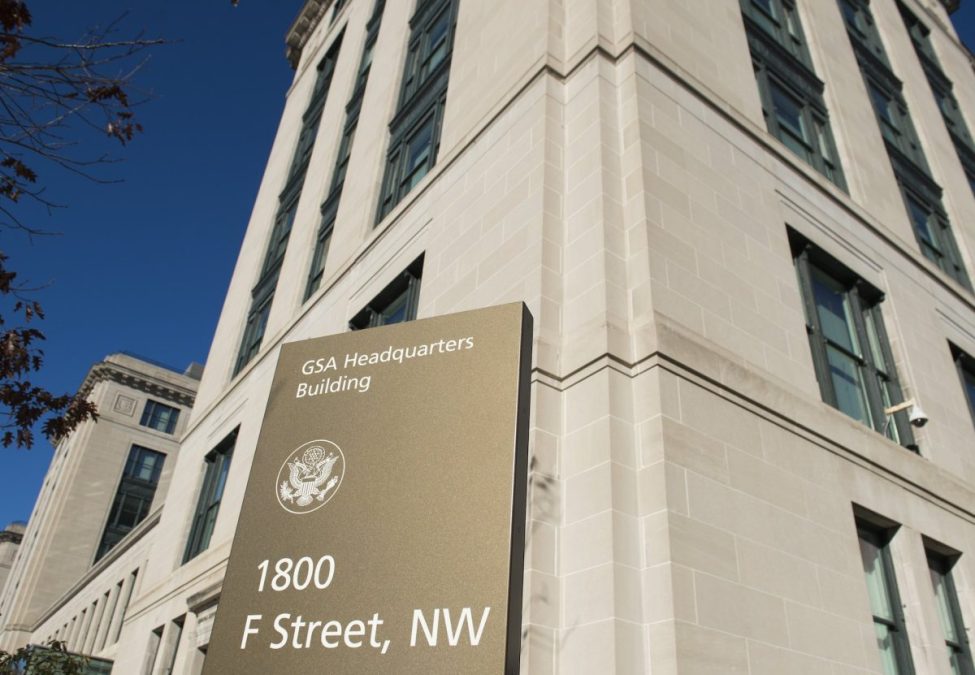GSA to unveil USAi, a new tool for federal agencies to experiment with AI models

The General Services Administration will roll out a new governmentwide tool Thursday that gives federal agencies the ability to test major artificial intelligence models, a continuation of Trump administration efforts to ramp up government use of automation.
The AI evaluation suite, titled USAi.gov, will launch later Thursday morning and allow federal agencies to test various AI models, including those from Anthropic, OpenAI, Google and Meta to start, two senior GSA officials told FedScoop.
The launch of USAi underscores the Trump administration’s increasing appetite for AI integration into federal government workspaces. The GSA has described these tools as a way to help federal workers with time-consuming tasks, like document summaries, and give government officials access to some of the country’s leading AI firms.
The GSA, according to one of the officials, will act as a “curator of sorts” for determining which models will be available for testing on USAi. The official noted that additional models are being considered for the platform, with input from GSA’s industry and federal partners, and that American-made models are the primary focus.
Grok, the chatbot made by Elon Musk’s xAI firm, is notably not included on the platform for its launch Thursday. xAI introduced a Grok for Government product last month, days after FedScoop reported on the GSA’s interest in the chatbot for government use.
FedScoop reported last month that GSA recently registered the domain usai.gov.
How USAi.gov will work
The USAi tool builds upon GSA’s internal chatbot, GSAi, which was rolled out internally in March to give GSA employees access to different enterprise AI models. Zach Whitman, GSA’s chief AI officer and data officer, hinted last month that the GSA was exploring how it could implement its internal AI chatbot in other agencies.
Once an agency tests the model on USAi, it has the option to procure it from the normal federal marketplace, one of the officials said. In other cases, an agency may stay on the USAi platform in the wake of changing market dynamics but can still access the model for testing, the official added.
The platform appears to directly coincide with the GSA’s ongoing rehaul of the federal procurement process, which is focused on consolidating the government’s purchasing of goods and services.
“What we don’t want is to get into this situation where we buy a few licenses for something here and a few licenses for something there, so being able to blanket our entire workforce with the same market-leading capabilities was hugely valuable to us, right off the bat,” Whitman said in an interview with FedScoop about the USAi launch.
GSA has announced a number of new collaborations this month with firms like OpenAI, Anthropic and Box, to offer their products at a significantly discounted price to federal agencies. And FedScoop reported this week that the GSA is considering prioritizing the review of AI technologies in the procurement process.
The USAi launch comes on the heels of the White House’s AI Action Plan, which calls on the GSA to establish an “AI procurement toolbox” to encourage “uniformity across the federal enterprise.” The plan, released last month, mandates that federal agencies guarantee any employee “whose work could benefit” from frontier language models has access to them.
Building trust with models
Whitman said GSA is hopeful federal users will have more trust to work with a platform like USAi, noting public tools on their own can prompt fears around working with sensitive materials.
Dave Shive, GSA’s chief information officer, said in an interview with FedScoop that the agency is “not just prototyping technology.”
“We’re also prototyping new ways to do business and it made a bunch of sense for us to build … a ‘model garden’ — a portfolio of models that our users can choose from, because they all have different strengths and weaknesses,” Shive said. “And those are models across a variety of vendors, because they’re trying to think of new, creative ways to do 21st-century business at GSA.
“And if they have that full suite of models, instead of being limited to just one vendor, it allows them to do that business level, business architecture, prototyping, the very things that we’re all expecting AI can help with,” he added.
In addition to the chatbot and API testing features on USAi, agency administrators can also view GSA’s data-based evaluations for the models to determine which are best for their specific use cases, one of the officials said.
“You can define ‘best’ in any number of ways, from cost implications, from speed implications, from usability implications to bias sensitivity implications,” the other official said, adding that “we have all this kind of decision criteria across a vast number of domains that go into them.”
The GSA said it is offering USAi to all civilian federal agencies, along with the Defense Department. A person familiar with the matter said that as of late Wednesday afternoon, chief AI officers had not yet been briefed about the launch of the USAI.gov platform.
Three evaluations take place prior to a model being available for testing on USAi, one of the officials explained. The first focuses on safety, such as looking at whether a model outputs hate speech, while the second is based on performance at answering questions and the third involves red-teaming, or testing of durability.
The safety teams reviewing the report are specific to USAi, the official noted, emphasizing that this process is not intended to “overstep the role or function of a USAi platform” that welcomes agency input.
Rebecca Heilweil contributed reporting.






